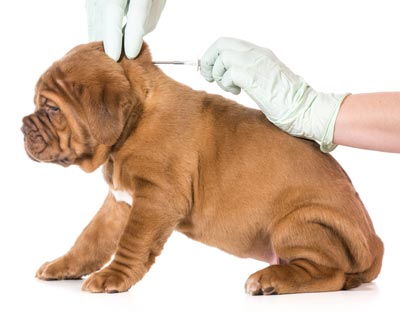- Home
- Microchipping: What Is It and Why Should You Do It?

Microchipping: What Is It and Why Should You Do It?

One of the worst things that can happen to a pet-owner is that their precious dog or cat becomes lost. It's scary, sad, and heart-breaking not knowing if your pet is safe or in danger. Consider having your pet microchipped to increase your chances of getting her back if she's ever lost.
What Is Microchipping?
A microchip is a tiny device (about the size of one grain of rice) that is inserted under a pet's skin. The procedure involves the use of a needle that is a bit bigger than the one used to give vaccines. Most pets don't react to the insertion.
A microchip consists of a computer chip, some electronics, and a capsule to hold them. Once it's under the skin, if a handheld scanner (using radiofrequency) activates it, the chip emits a code that is then displayed on the scanner. The code is linked to the pet's owner in the microchip company's system, and contact information can then be given to the finder of the pet.
A Microchip Does Not Track Your Pet
There is a common misconception that a microchip allows your pet to be tracked and her location to be found if she's lost. This is not the case. The microchip emits a code that is unique to you as the owner when it is scanned by a microchip scanner, and that's all it does. In order for it to help your pet get home, several things need to occur:
- Someone who finds your pet needs to take her somewhere to be scanned.
- You must have registered your pet's microchip with the company as belonging to you.
- Current contact information for you must be kept up-to-date with the microchip company. Whenever you move or change phone numbers, you have to remember to call the company and update that information.
As you can see, a microchip is not an infallible method of getting a lost pet home. However, having one gives your pet a much higher chance of getting back to you than not having one.
Keep Visible ID on Your Pet, Too
Sometimes a lost pet is found by someone who doesn't know about microchips or doesn't have access to a scanner. Sometimes no one thinks to scan the chip, or it has migrated from the spot where they are placed between the shoulder blades and the person scanning the pet doesn't find it. Sometimes the pet-owner hasn't kept their contact information up-to-date and, even though the lost pet is scanned, it is a dead end.
It's a good idea to always keep visible ID tags containing your current information on your pet in conjunction with having a microchip implanted. If someone happens to find your pet and there is a visible tag with your information on it, she can be returned to you more quickly than relying on the microchip alone, which needs to be scanned at a facility.
Of course, physical ID tags can fall off of a lost pet or have out-of-date information on them, too, so the best thing to do is to use both methods for your pet.
Indoor-Only Pets Also Need Identification
Even if you have a pet that does not go outside (indoor cats fit into this category most often), a microchip and breakaway collar with ID tags should be used. Indoor cats can escape sometimes, and it's crucial that they have proper identification on them if they are to find their way home.
Drawbacks to Microchips
As discussed above, a microchip doesn't help a lost pet get home if no one scans for it, if it has migrated and isn't found when scanned for, or if the owner hasn't registered the chip or kept his information in the microchip company's database current.
Sometimes there are incompatibility issues between scanners and chips. That is, some scanners don't pick up the radiofrequency of certain chips. Usually, in these cases, the scanner will at least tell the user that a chip is present, though it won't provide the chip company and ID number. In that case, a universal microchip scanner may need to be tracked down.
Microchips have been associated with some types of tumors in lab mice. While large studies haven't identified this as a problem in pets, it is something to keep in mind and discuss with your veterinarian.

 Loading... Please wait...
Loading... Please wait...




